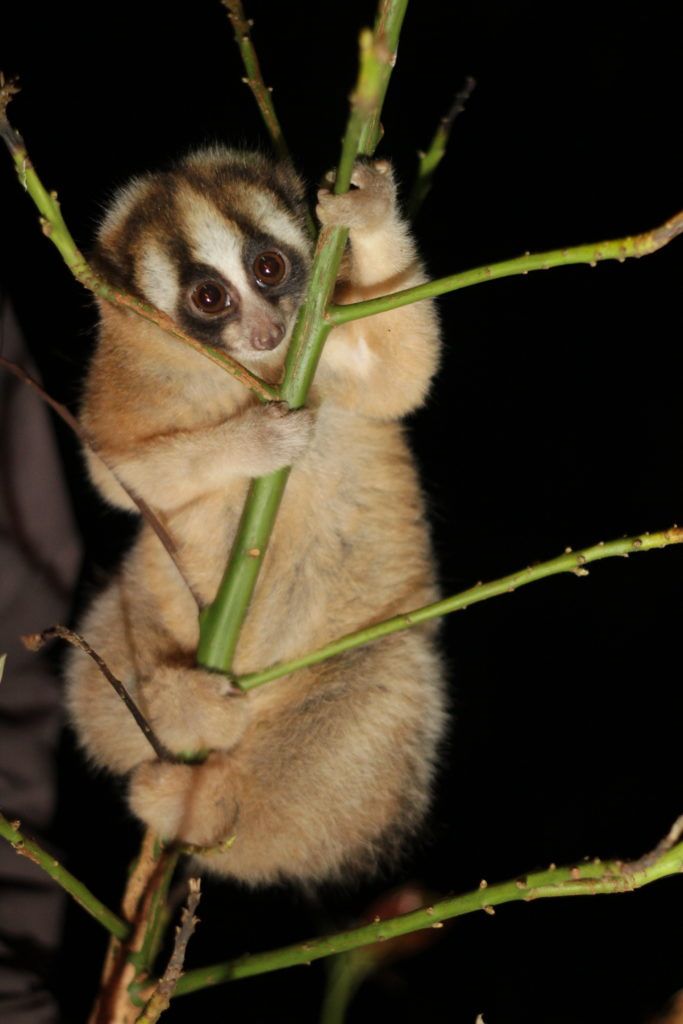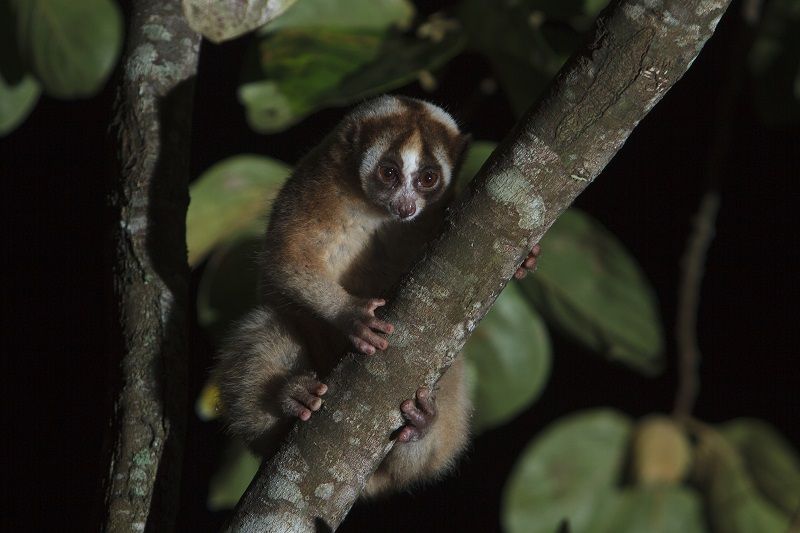Slow lorises may look cute and cuddly but these large-eyed primates are deadly and use venom to injure and even kill other slow lorises. Recent research has shown that slow lorises use venom as a defense mechanism against others of its kind, something that has previously only been seen in four other species worldwide. Only six mammals worldwide are known to use venom, but mostly to prey on other species, which makes this rare use of venom all the more unusual.
A sharp bite

Our colleague, Professor Anna Nekaris, has been working with the University of Queensland and Universitas Gadjah Mada (Indonesia) to study venom use in slow lorises. Between 2012 and 2020, Anna’s team tracked 82 individual slow lorises via radio collars, which revealed that both males and females are intensely territorial. In fact, 30% of all females and almost 60% of males studied showed at least one venomous bite wound, and 20% of all slow lorises captured showed evidence of intraspecific (within the species) fighting.
Anna discussed the effects of the venom in slow lorises: “Venom is known to play at least 14 distinct ecological roles, but intraspecific competition is amongst the rarest. Slow loris bites are very distinctive and are unlike those seen in other animals. Throughout this study we recorded and monitored wounds inflicted by other slow lorises, which even resulted in some animals losing fingers, toes or ears, demonstrating the potency of their venom.
Fights are more common in younger animals trying to find a new territory, but this level of aggression is rare among related species of primates. This discovery of how lorises use their venom is fascinating.”
Click below to find out more about venom use in mammals

What this means for conservation
To create venom, slow lorises raise their arms over their head, where they combine oil from the upper arm to saliva in their mouths to produce venom that can then be injected with their teeth. Their teeth are removed when they are illegally captured for exotic pets or for when they are used as props in tourist photos. Some also believe their venom and fur heals wounds, which has led to their use in over 100 traditional Asian medicines.
Watch a clip from Anna’s episode of BBC’s Natural World on slow loris venom
Co-author Dr Muhammad Ali Imron from Universitas Gadjah Mada (Indonesia) highlights the importance of these findings in slow loris conservation: “These findings have important conservation implications to stop the illegal trade of slow lorises. Biting behaviour is a very important mechanism for defense, so when their teeth are pulled out to avoid venomous bites during handling, they lose their ability to feed and defend themselves.”

By learning more about slow loris behaviour and physiology, more can be done to protect these remarkable little creatures.
Click below to read the paper in Current Biology:
Find out more about our work to protect the slow loris in Java:
